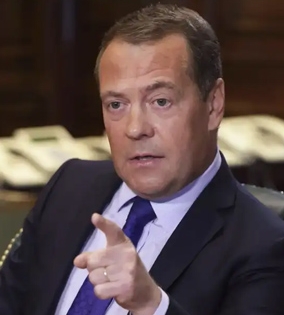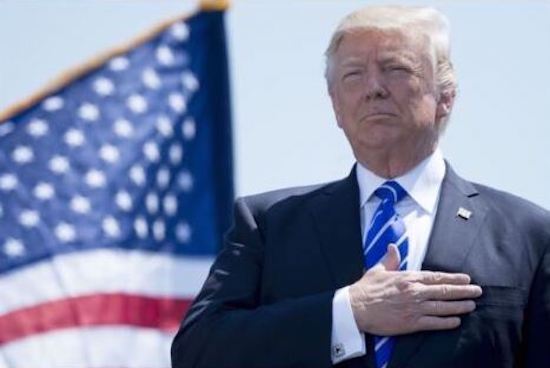Trump Confirms US Nuclear Submarines Near Russia in Strategic Warning to Medvedev
In a bold and highly unusual move, former President Donald Trump publicly confirmed the repositioning of U.S. nuclear submarines near Russia, breaking decades of strategic silence surrounding the movement of these covert military assets. The announcement served as a clear warning to Russia and came in direct response to recent nuclear threats made by former Russian President and current Security Council Deputy Chairman Dmitry Medvedev.

Trump’s statement shocked military analysts and defense officials, not only because of its confrontational tone but also due to the rare disclosure of U.S. submarine movements — information typically withheld to preserve the stealth and unpredictability that make these nuclear-powered submarines such powerful tools of strategic deterrence.
A Rare Disclosure of Submarine Positioning
Historically, U.S. presidents have signaled resolve through the movement of visible assets like aircraft carriers, Patriot missile systems, or B-52 bombers. But the decision to reveal the presence of attack submarines—especially in sensitive international waters near Russia—marks a shift in traditional military posturing.
“We rarely, if ever, talk about submarine movements unless there’s been an undeniable accident,” said Gene Moran, a former Navy captain and Pentagon strategic advisor. “That’s what gives them their strategic value — the uncertainty.”
Moran noted that nuclear submarine deployments are deliberately shrouded in secrecy because their untrackable nature makes them ideal for deterrence and surprise strike capabilities. By announcing their presence, Trump effectively transformed a covert operation into a public geopolitical message.
Strategic, Not Reckless
Vice Admiral Mike Connor, former commander of U.S. submarine forces, offered a more tempered analysis. He emphasized that Trump’s comments may sound provocative but remain consistent with long-standing U.S. doctrine.
“He didn’t really give away too much,” Connor explained. “Our adversaries already assume we have U.S. nuclear submarines deployed around the world — that’s been true for over 60 years. The announcement doesn’t change our actual capabilities.”
Instead of inciting direct confrontation, Connor sees Trump’s disclosure as a reminder: the U.S. has the ability to strike key Russian targets at any time. “It’s a more subtle form of military signaling, not an outright threat,” he said.
Calculated or Coincidental?
Trump did not offer specific locations, stating only that the nuclear submarines are “already in the region, where they should be.” Analysts believe this vagueness was deliberate — a way to deliver a message without escalating conflict.
Gene Moran speculated that the submarines could have already been scheduled for rotation in the area, but the timing provided an opportunity to reinforce a diplomatic warning. “It doesn’t cost anything,” he said. “But if you do it too often, adversaries start to map your behavior. That can have long-term strategic implications.”
Matthew Shoemaker, a former defense intelligence official, agreed: “It’s certainly unusual to announce it from an operational perspective. That tells us it’s more about sending a message to the Russians than conducting a tactical operation.”
Submarine Power and U.S. Deterrence Strategy
The U.S. Navy’s nuclear submarines are among the most powerful and elusive tools in the American military arsenal. Capable of carrying up to 154 Tomahawk cruise missiles, these stealth vessels often operate undetected in global hotspots, ready to respond to threats without notice.
Bryan Clark, a retired submarine officer and director at the Hudson Institute, believes this move reflects growing U.S. frustration with Russia’s nuclear rhetoric. “We’ve used submarines sparingly to influence adversary behavior,” he said. “Doing this in response to a nuclear threat from Russia is highly unusual.”
He added that the goal isn’t to launch an attack but to pressure Russia into resuming peace negotiations over Ukraine by demonstrating U.S. resolve. “This is about showing the capability to hold Russia’s strategic targets at risk,” Clark said.
Mark Cancian of the Center for Strategic and International Studies agreed that the move likely involved repositioning existing submarines already deployed in the region. “There’s no indication of new vessels being sent,” he said. “It’s about changing posture, not increasing presence.”
Unspoken Rules and Political Messaging
Retired Navy Capt. Todd Sawhill, who served as a targeting expert at U.S. Central Command, highlighted how unusual it is for a president to openly telegraph submarine activity.
“This isn’t how these operations are usually discussed,” he said. “But it aligns with Trump’s direct communication style — and that’s not surprising.”
Shoemaker warned that submarine operations near adversary waters can increase the chance of surveillance or tracking. Geography matters, and proximity to Russian coastal defenses could complicate the U.S. position.
Even so, tracking modern nuclear submarines remains exceptionally difficult. “Both sides exaggerate their abilities to detect each other,” Moran said. “But the reality is — these platforms are designed to disappear.”
Silent Chess Moves in International Waters
Connor pointed to a recent incident involving a U.S. submarine strike on Iranian targets, where its contribution was overshadowed by more visible Air Force activity. “That’s how submarines work — quiet but impactful,” he said.
In this case, however, the intent isn’t likely direct action. Clark explained that launching cruise missile strikes from the current submarine positions could risk overflying NATO countries like Romania, making an attack improbable. “The real message is deterrence — reminding Russia what we can do if provoked.”
Expect Russia to Respond
Experts agree: Russia will almost certainly react to Trump’s announcement. Shoemaker stated unequivocally, “Russia historically responds to American moves with equivalent gestures.”
Indeed, in 2024, Russia moved warships near Cuba, prompting a U.S. submarine to surface in Guantanamo Bay — a clear signal of readiness and capability. “These are coordinated signals,” said Moran. “But they can easily be misinterpreted.”
As both nuclear powers continue their quiet chess match beneath the ocean’s surface, one thing remains clear: the freedom to operate in international waters is not going away. And for Trump, repositioning U.S. submarines may be just as much about diplomacy as defense.

